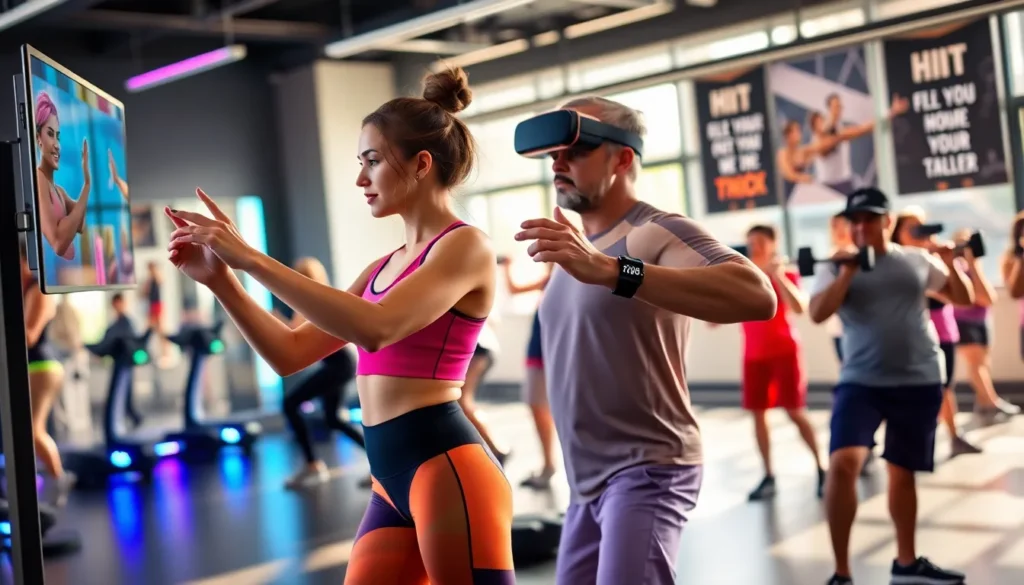Table of Contents
ToggleIn the ever-evolving world of fitness, staying informed about the latest trends and techniques is key to maximizing performance and achieving personal goals. With the rise of technology and the increasing emphasis on personalized experiences, modern fitness training is more dynamic than ever. This article explores the latest developments in fitness training, emphasizing tailored workout plans, innovative techniques, and the importance of nutrition and motivation in achieving fitness success.
Understanding Fitness Training Trends

As of 2025, fitness training is witnessing a remarkable transformation. The emergence of technology-integrated workouts and an increased focus on holistic health have significantly influenced how individuals approach fitness. Wearable technology, such as smartwatches and fitness trackers, has become commonplace, enabling users to monitor their performance, track their progress, and adjust their training plans accordingly.
Also, virtual fitness classes and online training platforms are on the rise, providing convenience and accessibility that cater to diverse schedules and preferences. Whether through interactive apps or live-streamed sessions, individuals now have the flexibility to exercise whenever and wherever they choose, leading to a more personalized fitness journey.
Trends have also highlighted the importance of functional training, targeting strength, balance, and agility. This approach not only enhances athletic performance but also contributes to overall daily functional movement, which is vital as individuals age.
The Importance of Tailored Workout Plans
Personalization in fitness training is not just a trend: it’s a necessity. Tailored workout plans are essential for maximizing results and minimizing the risk of injury. Each individual has unique physical capacities, goals, and health considerations, making a one-size-fits-all approach ineffective.
Effective tailored plans begin with a comprehensive assessment of an individual’s fitness level, goals, and any medical history. This allows fitness professionals to design programs that align perfectly with the client’s needs. For example, an athlete may require specific strength training and agility drills, whereas someone recovering from an injury may need a gentler reconditioning plan.
Plus to individualized workouts, incorporating progress tracking is crucial. Clients should be able to assess their improvement over time, which helps them stay engaged and committed to their fitness journey.
Innovative Training Techniques in 2025
In 2025, fitness training is characterized by the integration of advanced technology and research-backed methodologies. Among the most notable innovations are:
High-Intensity Interval Training (HIIT) with AI Assistance
AI-driven platforms are increasingly being used to create customized HIIT workouts that adapt to the user’s performance level in real-time. This approach not only maximizes efficiency during training sessions but also provides an engaging experience.
Virtual Reality (VR) Workouts
The introduction of VR technology has revolutionized how workouts are experienced. Users can immerse themselves in virtual environments, making workouts enjoyable while simultaneously challenging their physical limits.
Gamification
Integrating game-like elements into workouts can enhance motivation and engagement. Fitness apps that reward users for reaching milestones or participating in challenges turn training into a fun, interactive experience. This innovation attracts a wider audience and sustains long-term commitment.
Nutrition’s Role in Fitness Training
No fitness training regime is complete without a focus on nutrition. Nutrition plays a pivotal role in fueling workouts, aiding recovery, and ensuring overall well-being. In 2025, nutrition strategies have become more individualized, taking into account factors such as dietary preferences, metabolic rates, and individual fitness goals.
Nutrient Timing
Recent studies emphasize the significance of nutrient timing, strategically planning what to eat around workouts can enhance performance and recovery. Consuming carbs and protein before and after sessions helps replenish glycogen stores and repair muscle tissue, allowing individuals to work at their best.
Holistic Approaches
Also, there is a growing trend towards holistic dietary approaches. Many athletes and fitness enthusiasts are incorporating whole foods and plant-based options, recognizing the benefits of diverse nutrient sources for optimal health and vitality.
Staying Motivated and Committed
Motivation is a crucial component of any successful fitness training regimen. In the face of challenges, it’s essential to have strategies that help maintain commitment to fitness goals. 2025 introduces several effective techniques:
Community Engagement
Joining fitness communities, whether online or in person, can provide support and accountability. Engaging with others who share similar goals fosters a sense of belonging and encourages individuals to stay on track.
Goal Setting
Setting tangible, achievable goals is essential. These should be specific, measurable, attainable, relevant, and time-bound (SMART). Regularly revisiting and adjusting these goals ensures that motivation remains high and that individuals feel a sense of accomplishment as they progress.
Mindfulness and Mental Strategies
Practices such as mindfulness and visualization can enhance focus and determination. By incorporating mental workouts alongside physical training, individuals cultivate a mindset geared towards success.
Future of Fitness Training
The future of fitness training looks promising, with continuous advancements expected in technology and methodologies. As more research emerges, personalized training will likely become even more refined. Remote coaching and telehealth services will likely be widely adopted, providing greater access to qualified trainers regardless of geographical constraints.
Integration of Health Monitoring
Future advancements may include even more sophisticated health monitoring tools that not only track fitness metrics but also provide insights into overall health, such as sleep quality and stress levels. This holistic monitoring approach will empower individuals to make informed choices about their fitness journey, leading to improved health outcomes.
Sustainability in Fitness Practices
There is also a growing awareness of sustainability within the fitness industry. Eco-friendly gym practices and sustainable nutrition choices are becoming increasingly important as individuals seek to minimize their environmental impact while enhancing their fitness.
Conclusion
In 2025, fitness training is a vibrant and ever-changing landscape that emphasizes personalization, innovation, and holistic approaches to health. With tailored workout plans, cutting-edge techniques, and nutrition playing pivotal roles, individuals can approach their fitness journeys with confidence. As trends continue to evolve, staying informed and adaptable will be crucial for those committed to lifelong fitness. The future promises exciting developments, making it an exhilarating time to be involved in the world of fitness training.




